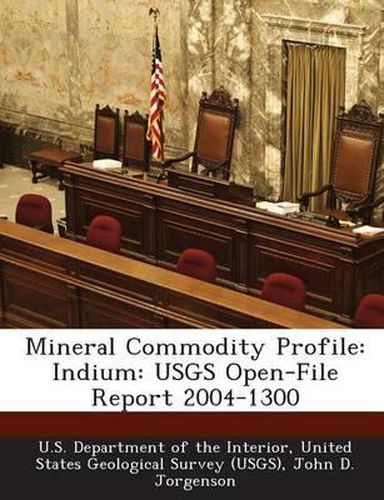Readings Newsletter
Become a Readings Member to make your shopping experience even easier.
Sign in or sign up for free!
You’re not far away from qualifying for FREE standard shipping within Australia
You’ve qualified for FREE standard shipping within Australia
The cart is loading…






Indium, like gallium and thallium, is a highly volatile chalcophile element in subgroup IIIA of the periodic table. It is a malleable, silvery-white metal found primarily in ores, in order of descending importance, of zinc, copper, and tin. It has many uses, but the principal one, which accounts for about 65 percent of the indium consumed in industry, is as thin films of indium-tin oxide (ITO) for liquid crystal displays. Indium is also used in semiconductors, in the form of indium phosphide (InP). The value of commercial grade indium consumed in the United States in 2001 is estimated to have been greater than $8.5 million based on domestic consumption of 58 metric tons (t). Indium is principally a byproduct of the electrolytic refining of zinc, although a small share is a byproduct of tin refining. Primary refined indium is produced in several countries which include, in descending order of quantity produced, China, France, Japan, Canada, Belgium, Russia, and Peru (Brown, 2002a). The United States produces only secondary material, and the quantity, which is the proprietary data of the only two producers, is not published. The world reserve base for indium is estimated to be about 5,700 t, which is far in excess of probable consumption over the next several decades; the United States has about 11 percent of this base. The sustainable production and consumption of indium appears to be no impediment in future years.
$9.00 standard shipping within Australia
FREE standard shipping within Australia for orders over $100.00
Express & International shipping calculated at checkout
Indium, like gallium and thallium, is a highly volatile chalcophile element in subgroup IIIA of the periodic table. It is a malleable, silvery-white metal found primarily in ores, in order of descending importance, of zinc, copper, and tin. It has many uses, but the principal one, which accounts for about 65 percent of the indium consumed in industry, is as thin films of indium-tin oxide (ITO) for liquid crystal displays. Indium is also used in semiconductors, in the form of indium phosphide (InP). The value of commercial grade indium consumed in the United States in 2001 is estimated to have been greater than $8.5 million based on domestic consumption of 58 metric tons (t). Indium is principally a byproduct of the electrolytic refining of zinc, although a small share is a byproduct of tin refining. Primary refined indium is produced in several countries which include, in descending order of quantity produced, China, France, Japan, Canada, Belgium, Russia, and Peru (Brown, 2002a). The United States produces only secondary material, and the quantity, which is the proprietary data of the only two producers, is not published. The world reserve base for indium is estimated to be about 5,700 t, which is far in excess of probable consumption over the next several decades; the United States has about 11 percent of this base. The sustainable production and consumption of indium appears to be no impediment in future years.